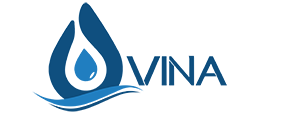© The introduction website of Vira Nisht Abgoon Company. All rights reserved
Water Leakage:
Water leakage is one of the global challenges in water management, with significant impacts on the environment, economy, and society. This issue is more common in countries with old or unstable infrastructure, leading to the waste of large volumes of water that could be used for agricultural, industrial, and drinking purposes. This article examines the impacts of water leakage, its challenges, and innovative solutions for identifying and managing this problem.
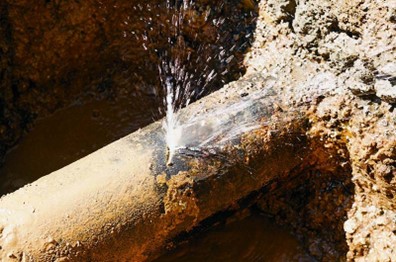
- Effects of Water Leakage on the Environment and Natural Resources
1.1. Waste of Water Resources
Water leakage directly leads to the loss of water resources, one of the most vital resources for humans and ecosystems. Given the global population growth and increasing demand for water, the waste of treated water exerts immense pressure on water supply systems. Reports indicate that millions of cubic meters of treated water are lost daily due to leaks in water transmission and distribution networks, seeping into the ground and exiting the consumption cycle.
1.2. Damage to Natural Ecosystems
Long-term water leaks, especially in environmentally sensitive areas, can have destructive effects on natural ecosystems. Leaked water, upon contact with soil and penetration into the subsurface, may cause soil erosion and the leaching of its nutrients. This issue can strain local ecosystems and lead to changes in the distribution of plant and animal species. For instance, excessive moisture in arid regions can disrupt the biological balance of these areas, causing undesirable changes in their ecological composition.
1.3. Groundwater Resources
One of the significant effects of water leakage in sewer systems is the risk of groundwater contamination. Leaked water can carry pollutants into aquifers, affecting the quality of fresh water. This issue not only increases treatment costs but also poses a threat to public health.
- Economic Impacts of Water Leakage
2.1. Increased Maintenance and Repair Costs
Water and wastewater networks affected by leakage require frequent and costly repairs. These costs include repairing damaged pipes, replacing worn-out components, and upgrading inefficient infrastructure. Additionally, the financial burden of addressing leaks is particularly high in arid and semi-arid regions, placing significant economic pressure on governments and water companies.
2.2. Reduced Access to Drinking and Agricultural Water
Water leakage reduces access to clean, treated water for communities. This issue is especially impactful in underprivileged areas or regions with scarce water resources. The loss of treated water in distribution networks results in less available water for drinking, irrigation, and industrial uses. Consequently, agricultural industries and food production are adversely affected, leading to reduced output, higher prices, and ultimately inflation.
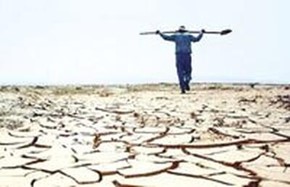
2.3. Increased Consumer Costs and Government Budget Strain
Water loss directly impacts consumer expenses. In many cases, the costs associated with water leakage are indirectly passed on to consumers. Governments, on the other hand, must allocate funds for the maintenance and repair of water infrastructure, which can lead to higher taxes or budget cuts in other sectors.
- Social Impacts of Water Leakage
3.1. Public Health Risks
Water leakage in sewer systems can contaminate drinking water supplies, increasing the risk of waterborne diseases. This issue is particularly critical in areas with inefficient wastewater infrastructure or insufficient water quality monitoring.
3.2. Public Dissatisfaction
Water leakage leads to higher water bills and reduced service quality. In regions with severe leakage issues, frequent service interruptions and deteriorating water quality can amplify public dissatisfaction and potentially result in social unrest.
- Traditional Methods of Leak Detection
4.1. Manual Listening Devices (Listening Rods and Geophones)
Traditional leak detection methods primarily relied on identifying sounds generated by water leaks using tools like geophones and listening rods. These devices detect acoustic vibrations along the pipes to locate leaks. While relatively simple and cost-effective, these methods lacked accuracy and efficiency, requiring skilled personnel and quiet environments to be effective.
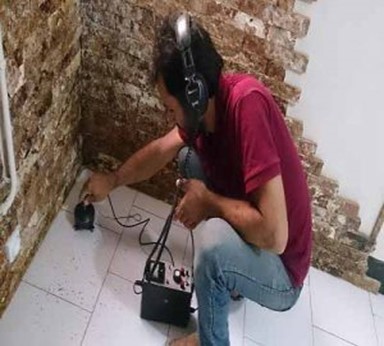
4.2. Step Testing
Another traditional approach was step testing, which involved detecting leaks by observing pressure changes in the water system. This method was suitable for high-pressure pipelines but was less effective for smaller pipes or low-pressure areas.
- Modern Leak Detection Methods
5.1. SmartBall Technology
SmartBall is one of the most advanced leak detection technologies. It uses a floating ball inside pipelines to detect leaks. This ball can pass through valves and complex pipe bends, identifying even minor leaks with high accuracy.
5.2. Sahra Technology
The Sahra system offers a range of services, including precise leak detection, identification of leakage locations, detection of unauthorized water use, inspection and monitoring of pipeline conditions to identify issues, and assessment of hydraulic problems. A unique feature of this system is its ability to record video footage from inside the pipelines, making it highly effective for detailed infrastructure assessments. Its high precision and efficiency help reduce costs and increase operational productivity.
5.3. Tracer Gas Methods
This method involves injecting light gases such as hydrogen or helium into pipelines. The injected gas escapes through leaks and is detected by specialized sensors. Its lightweight nature and the fact that it does not require water shutdowns make it especially effective for plastic pipes.
5.4. Satellite Leak Detection
Satellite leak detection uses radio wave data to identify potential leak locations in pipeline networks. This method reduces human labor costs and, due to its speed and efficiency, is particularly suited for large-scale urban or international projects. With this technology, water management organizations can create precise maps of their networks and identify high-risk areas.
5.5. Smart Monitoring Systems (IoT)
Using the Internet of Things (IoT), water networks are monitored in real-time and automatically. Sensors collect data on leaks, pressure, and water quality, transmitting the information to a control center. These systems facilitate optimal resource management and early detection of leaks.
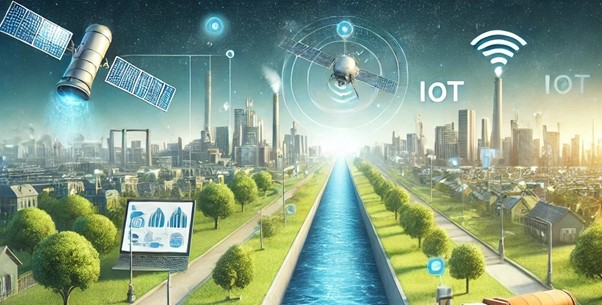
5.6. Drone-Based Sensors
Drones equipped with sensors can access hard-to-reach areas and detect hidden leaks using thermography or radar technology. This fast and efficient method is particularly useful for monitoring extensive networks or mountainous regions.
- Positive Impacts of Leak Detection on the Environment and Society
6.1. Preserving Water Resources
Leak detection methods directly contribute to conserving water resources. By reducing water loss in distribution systems, more water remains available for drinking, agriculture, and industrial purposes.
6.2. Reducing Maintenance and Operational Costs
Early leak detection ensures that infrastructure issues are identified and resolved promptly, preventing significant damage and reducing future repair costs.
6.3. Preventing Environmental Pollution
In wastewater systems, leak detection helps reduce contamination of groundwater and the environment. It also prevents wastewater from entering natural water bodies, mitigating associated environmental risks.
